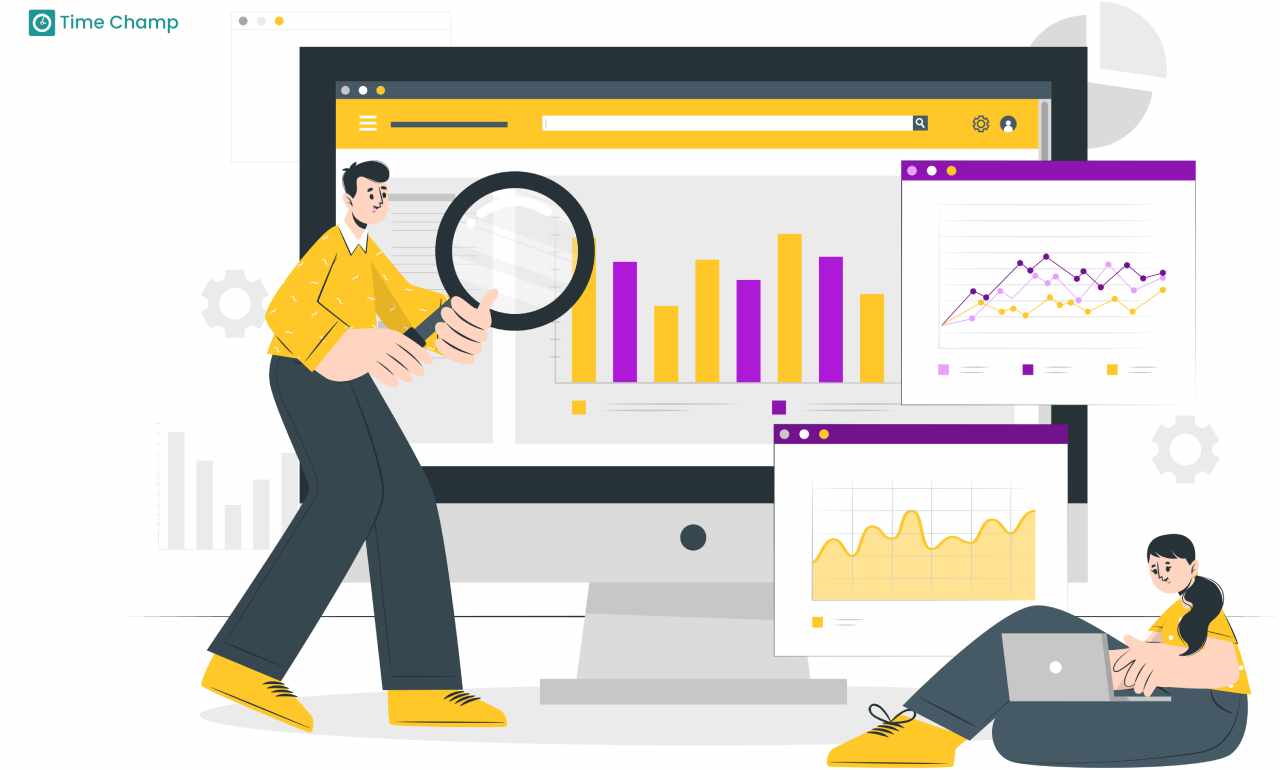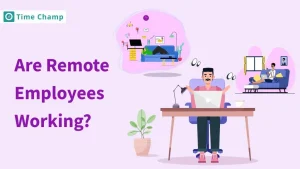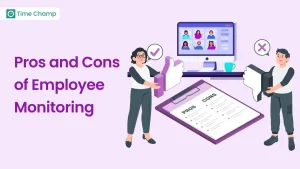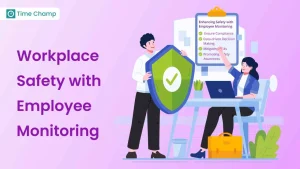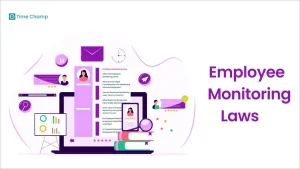Is your computer activity being secretly monitored? Employee monitoring software is on the rise in organizations with the primary goal of increasing efficiency and security. But it can also cause discomfort among the employees regarding their privacy. If you feel that your activities are being monitored, then it is necessary for you to learn how to detect employee monitoring software. It is important to be aware of the signs as this can help you feel more in control of your environment at work. In this discussion, you will discover some simple and effective ways for you to detect employee monitoring software on your devices.
What is Employee Monitoring Software?
Employee monitoring software is a tool that monitors employee activities on their work devices. It records sites they open, apps they use, time spent on various activities, and also even takes screenshots or recordings of the computer screen. This software aids managers in evaluating the level of productivity among employees, improving weak areas, and determining if policies are being followed. It can also recognize potential security risks-such as the unauthorized gain of access to confidential information or inappropriate usage of business resources.
Ways to Detect Employee Monitoring Software
If you’re wondering how to detect employee monitoring software on your work device, here are a few ways to confirm if it’s installed:
- Install Task Manager or Command Line: Check active processes and find any suspicious programs.
- Monitor Network Traffic: Examine unusual data traffic or new connections.
- Install Anti-Spyware Software: Detect hidden monitoring tools that are running in the background.
- Signs of Stealth Mode Operations: If your performance is slow, your data usage is high, or there are unknown files, it may indicate monitoring software.
Use the Command Line
One way of checking whether your work computer is being monitored is by using the command line. It is like having a sneak peek at what programs are running in the background.
For Windows, you can use the “tasklist” command. On Mac or Linux, try “ps aux.” These commands show all the running processes, including any monitoring software that may be running.
Scan the list for anything that you do not recognize or that looks questionable. Monitoring programs are usually given names that do not raise suspicion to the users of the computer.
The command line gives you a direct way of checking whether your activities are being monitored or not. It is a handy gadget to help you protect your privacy at the workplace.
Check Task Manager
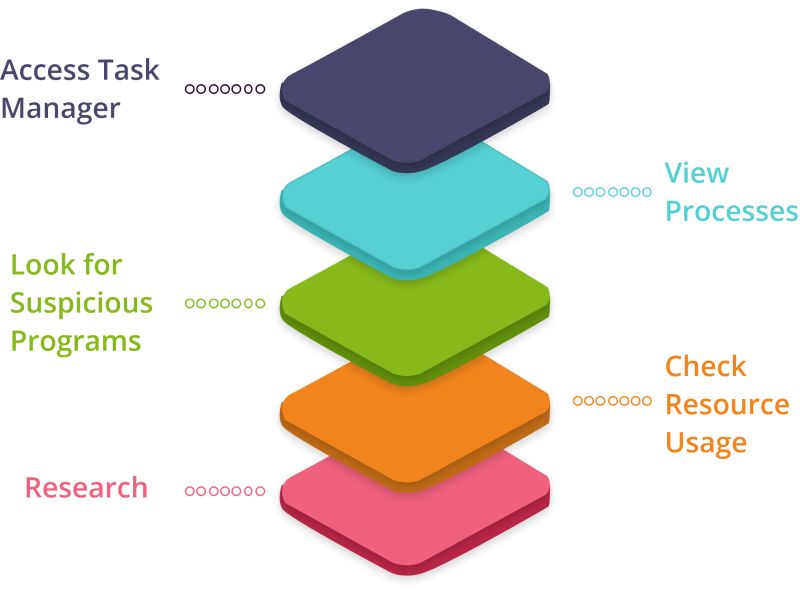
Task Manager is a utility program in Windows that displays all the applications and processes that are currently active on the computer.
Access Task Manager: Right-click on the taskbar and select “Task Manager” from the menu that appears.
View Processes: In the Task Manager window, click on the “Processes” tab. Here you can find a list of all the programs and background processes that are currently active on your computer.
Look for Suspicious Programs: Scan through the list for any programs that you do not recognize or that seem out of place. Monitoring software is usually installed and operates under names that are quite generic or even seemingly meaningless.
Check Resource Usage: Look at the CPU, memory, and disk areas to see if there are any programs that take up a lot of resources and that may be used for monitoring.
Research: If you come across something that looks fishy, you can right-click on the process and click on ‘Search online’ to get more information about it. This can assist you in identifying whether it is monitoring software or a genuine program.
Install Anti-Spyware Software
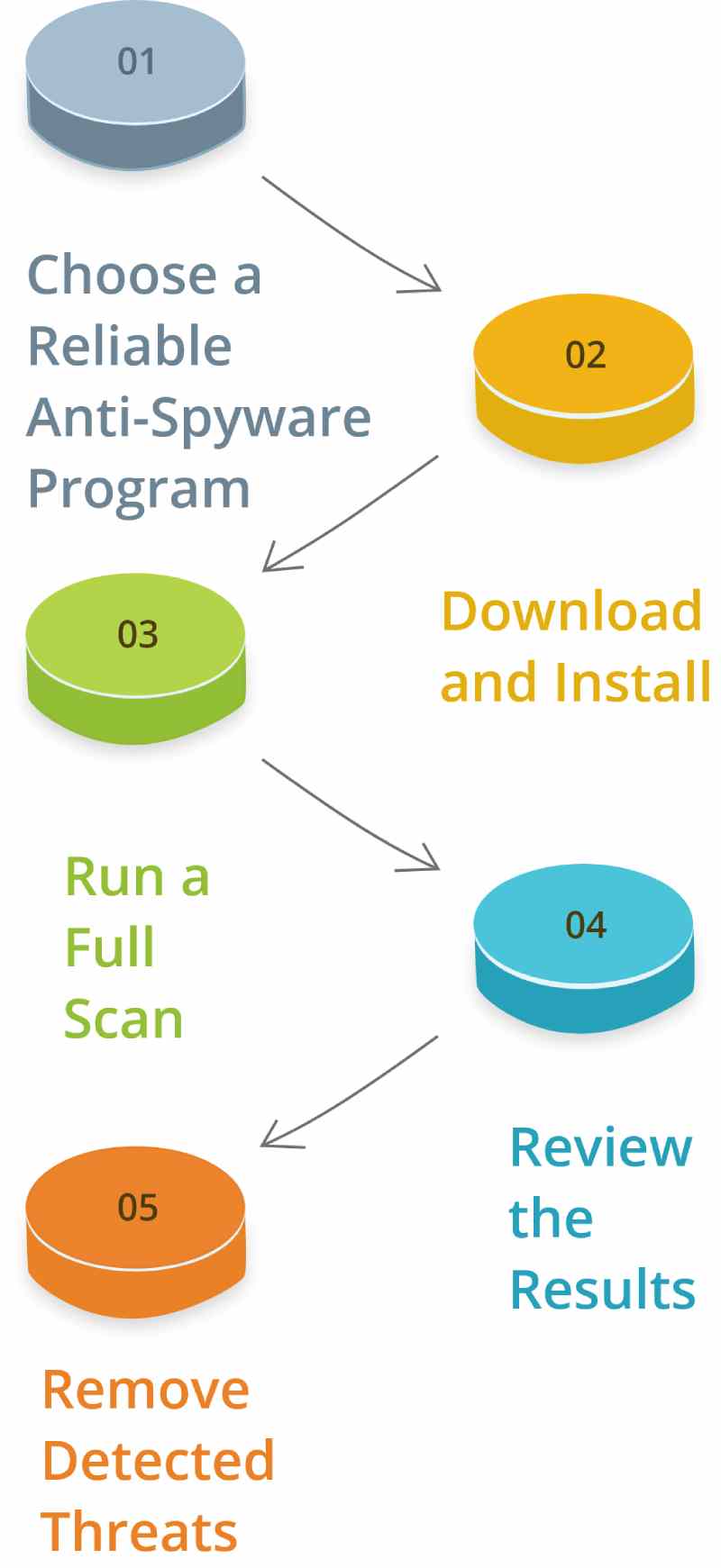
One of the simplest ways to check if your work computer is being monitored is by installing anti-spyware software. These programs are intended to detect and delete monitoring tools that can be installed secretly. Here’s how you can use anti-spyware software effectively.
Choose a Reliable Anti-Spyware Program: There are many choices available, some of which are free while others are paid. Choose one that has good reviews and is effective in its use.
Download and Install: Read the instructions and install the anti-spyware software on your computer as described in the instructions. Be careful to download it from a genuine site to avoid downloading more spyware.
Run a Full Scan: After installation, run a full system scan. This will search for any spyware or monitoring software in all the files and programs on your computer.
Review the Results: Once the scan is over, the software will list all the programs that are considered to be dangerous or malicious in some way. Please check this list to see if there is any monitoring software that has been installed.
Remove Detected Threats: If the software has detected any spyware or monitoring tools, then follow the instructions provided by the software to remove them. This will assist in avoiding situations where your activities are being monitored, hence protecting your privacy.
Signs of Stealth Mode Operation
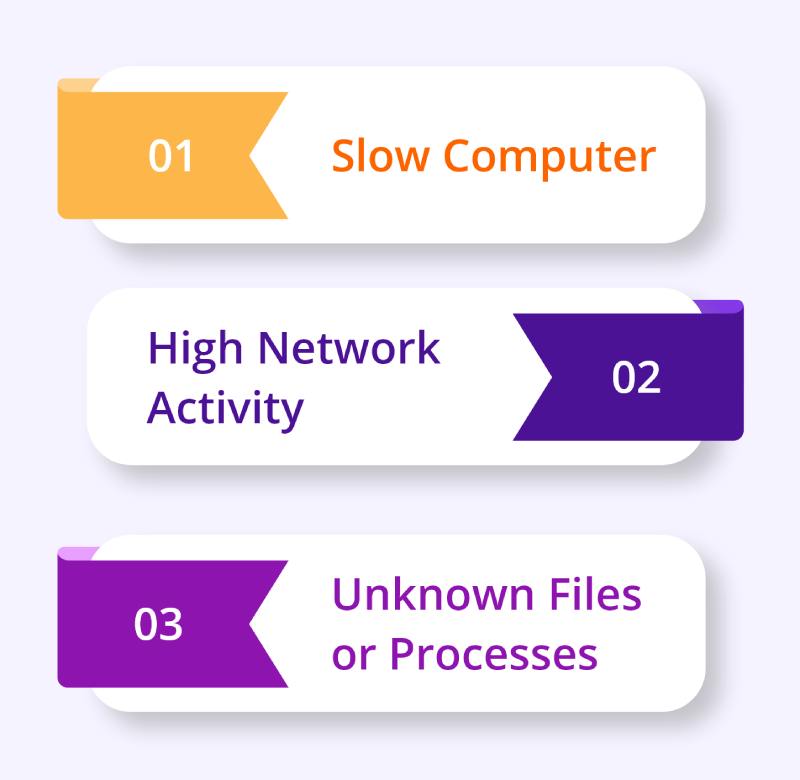
Here are some of the basic signs that can help you to know that the employee monitoring software is running in stealth mode.
Slow Computer: Just like when you are typing a document on Word, the computer suddenly slows down or does something unusual, it should be regarded as being monitored.
High Network Activity: If you find out that data is being sent or received when you are not frequently using the computer, then it could be a sign of monitoring.
Unknown Files or Processes: Look for files with names you’ve never seen before, or those names that you cannot comprehend.
Knowing these signs can assist you in determining whether your computer is being monitored secretly. If you think you are being monitored, then you should consult with your IT department or your manager.
Network Traffic Analysis
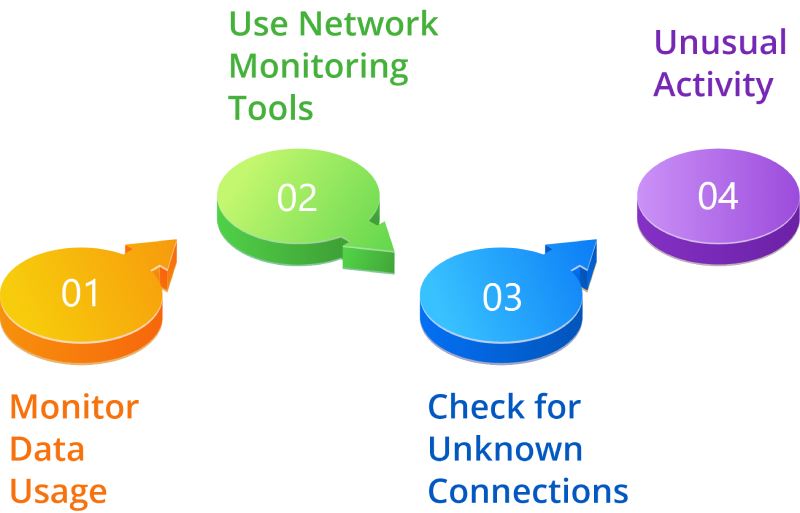
Monitor Data Usage: Be careful with your data consumption. If you observe that there is a lot of data being transferred when you are not browsing the internet, then it may be monitoring software sending data to a server.
Use Network Monitoring Tools: There are free tools available that can help you monitor the data being transmitted from your computer and to which destination. These tools can indicate whether there is something out of the ordinary.
Check for Unknown Connections: Look for any links that are concealed or that may be unsafe. Some monitoring software connects to remote servers and these may be easily noticeable if you are aware of what to look for.
Unusual Activity: If you find that your computer is accessing sites or servers that you have no idea about or at some time of the day that you never permitted, then you are being monitored.
What Should You Do If Your Work Computer Is Being Monitored?
When your work computer is being monitored by your employers, then do the following things:
Stay Informed about Company Monitoring Policies
To begin with, it is crucial to know your company’s monitoring policies. Every organization will have some sort of policy or procedure regarding what is monitored and the reasons for it. You should read through these documents or consult with the HR department for more information. It is important to be aware of these policies so that you can modify your behavior at work in order not to violate them. Another aspect that you should know is the privacy and monitoring rights of an employee.
Reserve Your Work PC for Work-Related Tasks Only
Use your work computer only for work related tasks. Do not use it for writing personal emails, visiting entertainment sites, or typing personal passwords or financial information. It is safer to use a different device for personal business even if you believe your employer is not spying on your computer. This assists in keeping your work safe and in compliance with company policies. Also, make sure your work computer has a password and log out when you are done using it to avoid the risk of someone accessing your work and personal information.
Be Mindful of Your Online Behavior
Just remember that if your computer is being monitored, your browsing history, emails, and even messages can be read. Always be professional in your communication and be careful with the sites you are visiting.
Communicate Openly with Your Supervisor or HR Department
If you have any concerns about surveillance, you should report them to your manager or the HR department. They can assist in explaining and providing information about anything you may wish to know concerning your privacy. The most important thing is to be professional and have a good work ethic. It is always a little awkward to be observed, but it is not very rare to have someone observing you for the sake of business or protection. Just keep on going and you will be compensated for your efforts.
Remember that monitoring is not about spying on you but is aimed at ensuring a safe and efficient workplace. If you follow these tips, you will be able to work in monitored workspaces without discomfort and stress.
Best Practices for Employers to Implement Monitoring Software
The following are the best practices for implementing monitoring software.
Implementing Monitoring with Transparency
When using monitoring software, it is crucial to explain to the team why and how the software is being used. Describe what data is gathered, how it benefits the company and its employees, and how it helps to achieve goals. This openness contributes to the creation of trust and shows that monitoring is intended to improve productivity, adherence to the rules, and the company’s welfare. It promotes accountability and ensures that the environment in which people operate becomes more courteous and aware of the role of monitoring in enhancing collaboration.
Respect Privacy of Employees
Privacy in the context of monitoring software is all about making sure that the employees are informed about what data is being collected, why it is being collected, and how it will be used. It is about setting limits to avoid information sharing and to create trust. You should review privacy policies periodically to ensure compliance with legal requirements and to foster a culture of privacy in the workplace. There should be procedures whereby the employees can question or raise concerns about the use of data so that things are made clear and believable.
Ensure Data Security
Data Security is the main factor that should be considered when using monitoring software. Select secure software and ensure that all the data is protected. Ensure passwords are strong and encrypted. Continuously update the software to stay safe from threats. You should check and update security frequently. This helps in avoiding cases of information leakage and therefore information is well protected.
Training and Awareness for Employees
Employers should educate employees about the monitoring software. Explain why it is used, the data it collects, and how it influences their work. These sessions help in explaining the company policies, ensuring that privacy rights are well understood, and building trust. Providing information about the benefits of the software helps to form a positive organizational environment, where monitoring leads to the improvement of productivity and safety.
Subsequent updates and explanations of the software’s function also strengthen its relevance in the workplace.
Compliance with Legal and Ethical Standards:
Employers should adhere to legal and ethical standards when employing monitoring software. This means not invading the privacy of the employees, explaining to them why the software is being used, and making sure that all is done legally. Updating policies and paying attention to employees’ concerns contribute to the formation of a fair environment where everyone is aware of the rules.
Why Would a Company Use Employee Monitoring Software?
1. Ensure Productivity
Employee monitoring software enables businesses to track how employees spend their time. With these, they can identify places where productivity might be slipping so that appropriate steps can be taken to improve performance. For instance, if an employee is having problems managing time or concentrating on work activities, the organization will know how to intervene to get things back on the right track.
2. Manage Remote Teams Effectively
As more teams work remotely, monitoring software offers a way to see how employees are doing from afar. This helps organizations make sure employees are on track, staying focused, and working productively just like they would in the office. It enables organizations to monitor the level of work done on projects and possibly change the amount of work expected or done.
3. Protect Your Sensitive Data
It is important to keep company data safe. Employee monitoring tools guarantee that any information that is sensitive is well dealt with. They monitor file access, web activity, and emails to help organizations quickly spot risks or breaches and protect the business’s confidential data.
4. Identify Training and Development Needs
Monitoring tools track not only productivity but also find the areas where employees may need extra training or support. When tasks are being done slower than usual or the quality is low, organizations are aware of which areas to provide more resources or training to improve the team.
5. Ensure Legal and HR Protection
Employee monitoring can be a lifesaver in industries with strict regulations or legal issues. Having a record of employee activity will help organizations protect their business from claims of misconduct or disputes. Monitoring software can be used as an evidence trail to assist organizations fast and efficiently resolve issues.
Can Companies Even Legally Monitor Employee Activity?
Yes, companies can monitor employee activity, but it depends on a few things. The first is that monitoring should have a good reason, such as to increase productivity or protect company data. It could violate privacy laws if there’s no clear reason.
In the U.S., the Electronic Communications Privacy Act (ECPA) allows monitoring as long as employees are told about it or agree to it. The GDPR is stricter in Europe and companies must be careful with employee data and only monitor what is needed.
Moreover, monitoring is usually bound to company owned devices, and the personal devices of employees are out of bounds unless they explicitly consent.
While it’s legal, companies should be careful about how they monitor. They should ensure it’s relevant to the business and that employees know what’s being tracked.
Conclusion
In conclusion, understanding how the process of employee monitoring takes place can help to alleviate privacy concerns. As long as you are in a monitored environment, following company rules, not using your work computer for anything else but work, and being professional on the internet, you should feel safe. You should remember that monitoring is intended to enhance the state of affairs in workplaces and make them safer and more effective. Such practices foster a good working environment that is characterized by respect for company policies and individual privacy. Remember these tips to increase productivity and guarantee safety at work.
Unlock seamless efficiency and privacy with Time Champ—your non-intrusive monitoring partner!
Unlock enhanced workplace efficiency and security with Time Champ's non-intrusive monitoring software, prioritizing employee privacy!
SignUp for FreeBook DemoFrequently Asked Questions
Employers use employee monitoring software to improve productivity, protect data, and ensure that tasks are done on time. It helps them to track the progress of work, give feedback and check that everything is fine. This software also improves accountability and makes the workplace safer and more efficient.
If you’re concerned about employee monitoring software on your computer, watch for these signs: slow performance when the computer is not stressed, appearance of pop-ups, programs that start on their own or programs that the user does not recognize, restricted settings, and network usage during off hours. These can indicate monitoring software might be in place.
To check for the presence of employee monitoring software through the command line, you can use specific commands depending on the operating system. On Windows, use the ‘tasklist’ command to list all running processes. On Mac or Linux, use “ps aux” to do the same. Search for any new or questionable processes that may suggest the presence of monitoring software in the background.
Employers can ensure data security with monitoring software by selecting proper tools, using encryption, and frequently changing security. Restrict the use of the data, train the employees on how to handle the data, and assess the risks that are likely to occur. This assists in preventing leakage of information and maintaining the privacy of the employees.
Employers should inform the employees about the reasons for using the monitoring software, the types of data that will be collected, and how the data will be utilized. They should also educate the employees, respond to their issues, and inform them of any changes. This makes them have trust and be able to comprehend the monitoring that is being done.
